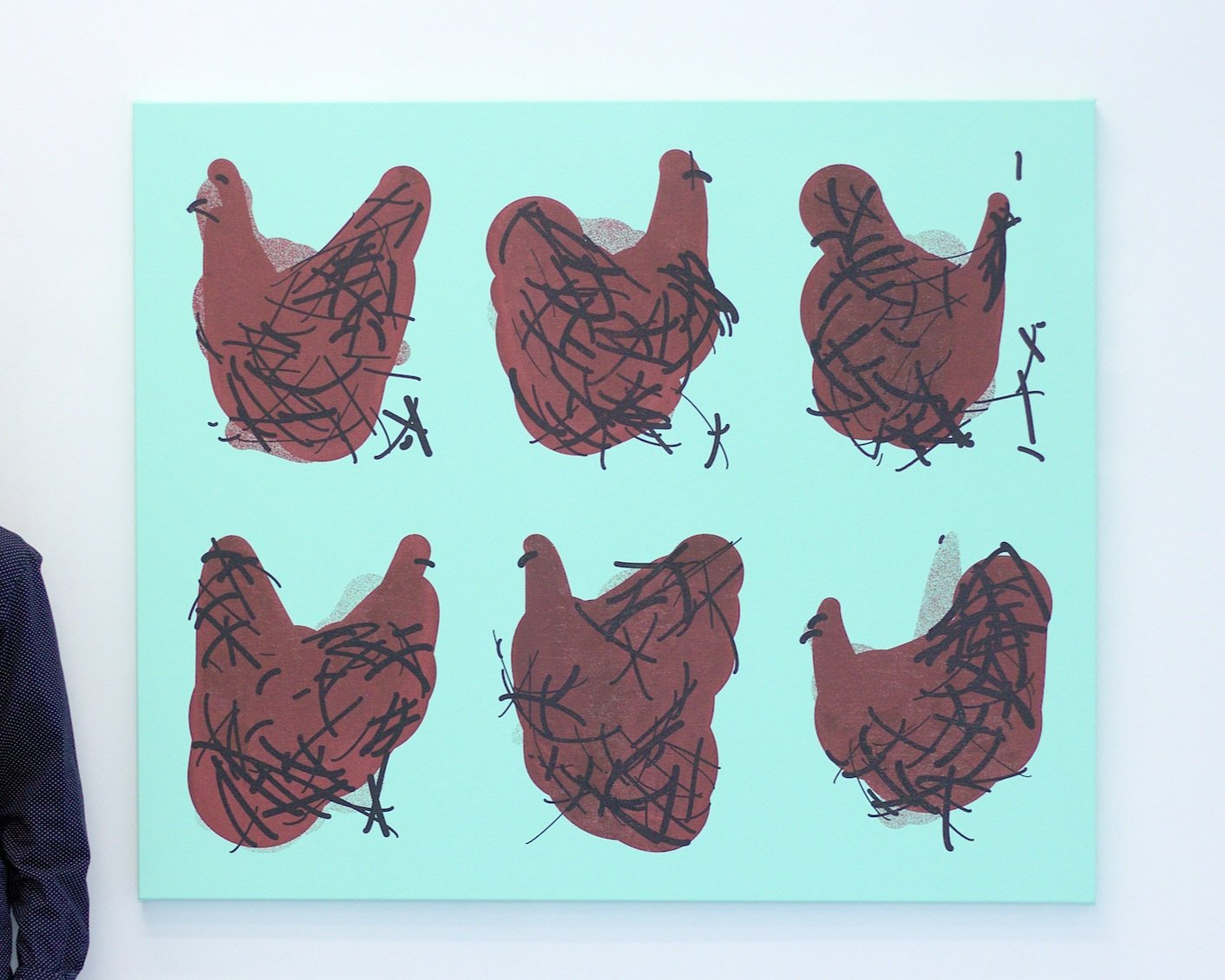My artwork investigates the Algorithmic Gaze: how machines see, know, and articulate the world. As machine perception becomes more pervasive in our daily lives, the world as seen by computers becomes our dominant reality. Collaborating with AI systems, I create physical abstract prints that are reliably classified by neural networks. It’s art by AI, for AI. By giving the algorithms a voice to speak in we are better able to see the world through the eyes of a machine.
How it works
My work focuses on how machines see the world. I have created a drawing system that allows neural networks to produce abstract ink prints that reveal their visual concepts. Surprisingly, these prints are understood not only by the neural networks that created them, but also universally across most AI systems which have been trained to recognise the same objects. Neural networks have been trained on thousands of individual items from everyday life, such as “Rabbit”, “Banana”, or “Dalmatian”. Using the drawing system I have provided, the neural networks directly express in simple ink drawings their own versions of these categories – creating abstract shapes that convey their understanding of the world.
The composition, line placement, and colors are all chosen by neural networks attempting to make the drawing best represent the concept. Though these networks were trained only on real world images, when forced to express themselves abstractly they are able to create simpler forms that match their internal representations. After a print is made, I verify that the computer generated drawing is recognized broadly across other AI vision systems. For example, the three prints above were verified to independently be recognizable by both Google and Amazon image recognition systems. This suggests that the forms are compatible with a universal machine visual language. For this reason, when other vision systems encounter these prints they may be confused. For example, photos taken on a cell phone of the Banana print can get classified as food.
The AI systems we are creating are their own unique culture, and so often their way of representing the world can seem foreign to what we’ve come to expect. But their ability to abstractly represent concepts that we in turn recognize suggests we may have more in common with the machines we are creating that we realize.



